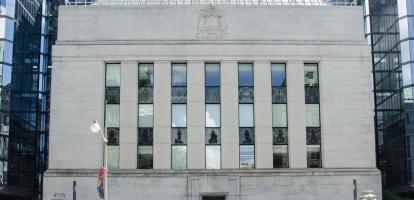The global economic lockdown implemented to contain the COVID-19 virus has caused the most severe economic downturn in Canada since the Great Depression of the 1930s. But while production plummeted, the overall income of Canadians hardly budged because of the federal government’s aggressive debt-financed policy response. Including both planned stimulus spending and the effects of the recession on revenues and expenditures, the lockdown-related increase in government debt amounts to about $550 billion.
As I point out in a recent C.D. Howe Institute paper, most of the current discussion around the additional debt focuses on its sustainability — whether it can be rolled over indefinitely without requiring tax increases or spending cuts to finance all the interest that will have to be paid. This will be possible if the government’s borrowing costs grow more slowly than the economy. That would allow the debt to shrink relative to GDP, and interest payments to shrink relative to government revenues. Canada has experienced extended periods in the past when borrowing costs were less than output growth. If it does again, the debt may not put federal finances under stress.
But it will still impose economic costs — though these get much less attention in policy discussions. Many politicians and economists seem to be assuming that if the debt is fiscally sustainable, it can be rolled over indefinitely without imposing any economic costs. But is it really possible to entirely escape the economic cost of the recession by issuing debt?
Sadly, it is not, because the additional government debt will hurt economic performance. It does so by crowding out domestic business investment and thus reducing future incomes and consumption. Of course, Canadian businesses faced with a lack of domestic sources of financing for investment can borrow abroad to fill their financing gap. This does maintain our country’s capital stock, but the additional debt servicing payments to foreigners reduce real incomes in Canada, and that is an economic cost.
In theory, a country could be investing so much and receiving such a low economic return on its investments that additional government debt would not weigh on economic performance. The private investment that gets crowded out would not have been worth the trouble of saving. In this case, saving less now and spending more would not affect future spending, so issuing debt and rolling it over indefinitely would not have an economic cost.
But a look at the data on investment and the return to that investment in the corporate sector indicates Canada is not in this position: Canadians would be better off with more rather than less investment. Rolling over the lockdown-related debt therefore would have an economic cost. Which means the income loss arising from the recession can only be deferred, not eliminated, by issuing debt.
How far into the future should this loss be shifted? It is hard to make a convincing case that the benefits of stabilizing the economy extend beyond Canadians alive today. Fairness therefore requires that the lockdown-induced increase in debt be retired before the next generation starts working and paying taxes, which will occur 18 to 25 years from now.
A second fairness issue is how the recession-induced output loss should be shared among the current generation. The government should implement a set of debt reduction policies that, given the distribution of the income losses during the recession, achieves what is considered a fair sharing of its burden.
Every effort should be made to minimize the efficiency cost of achieving these two fairness goals. To help guide the way, the government should set up a parliamentary committee to consult with Canadians on who should pay for the economic lockdown and, with the assistance of an expert panel, develop a proposal for achieving the target outcome in the most efficient way.
Published in the Financial Post
John Lester is an Executive Fellow at the School of Public Policy, University of Calgary.





